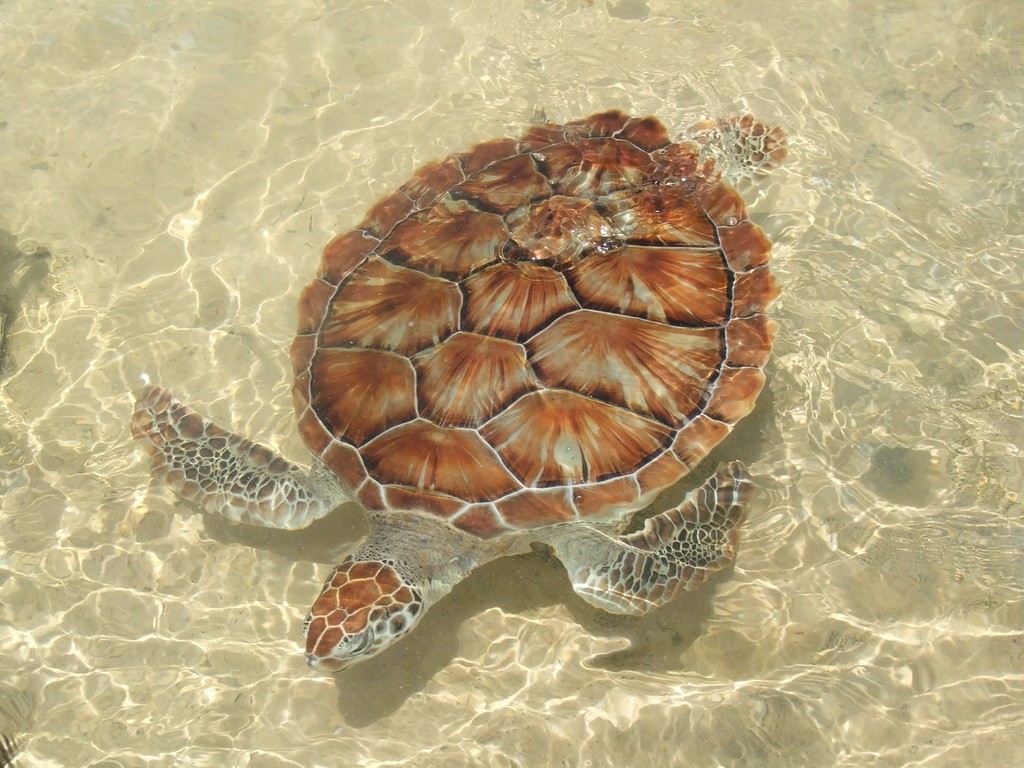Do not refresh or close this window.

Do not refresh or close this window.


Share
Here at Cayman Turtle Conservation and Education Centre (CTCEC) our mission and work encompass a multifaceted approach to the conservation of sea turtles and other indigenous animals. Our aim is to sustain and increase the wild population of Green sea turtles through the release of captive-bred turtles into the wild, as well as conducting research, participating in collaborative scientific studies, and integrating conservation education.
The first thing you see when you visit Cayman Turtle Centre is a big pond, where our adult breeding turtles breed and lay up to 150 eggs in nests they make in the sandy beach area. This provides all the eggs for our turtle release programs.
First thing each morning, during nesting season, the eggs are carefully collected and taken to our hatchery where they are kept at a steady 86 degrees. A turtle’s sex is determined by egg-temperature, so if the eggs are kept warmer at a temperature warmer than 86 degrees, more females will hatch out, but if they are kept cooler it will result in more males. Most of the eggs are kept in Styrofoam containers until they hatch out into baby turtles, no bigger than an Oreo cookie.
We utilize 4 different methods as part of our turtle release programmes.
At just 2 days old, the tiny, Oreo-sized, hatchlings born at our Centre can be released into the wild during the evening, under cover of darkness to avoid catching the eye of natural predators in the water.
‘Jump Starts,’ on the other hand, are when the tiny two-day-old hatchlings are taken out by a dive boat and released directly into to a floating clump of Sargassum seaweed, where they will find food and safety until they are bigger, and where they will avoid the danger from predators on the seashore.
As part of our head-starting programme, Green sea turtles, hatched at our Centre, are raised in the care of our expert veterinary team until they have grown to one or two years old before being released. At this age, they are too big to be eaten by most of the fish and birds that feast off little hatchlings, so have a much better chance of survival in the wild.
Turtle Nest Translocations are when eggs are buried on the beach in replica sandy nests, just a few days before they are expected to hatch. Our dedicated team of nest watchers keep an eye on these nests to ensure that the hatchlings can make it out of the nest and into the sea safely, usually after dark.
Green sea turtles are known by ecologists as a ‘Keystone,’ species. By grazing on underwater seagrass beds, they are the ‘key,’ to ensuring these beds remain a healthy habitat for all the other animals that live in them, such as crabs and lobsters, juvenile fish and molluscs.
When Ferdinand Columbus first spotted the Cayman Islands in 1503, he called them “Las Tortugas,” which means, “The Turtles,” after all the turtles he saw there. At that time, it was the centre of the biggest turtle rookery in the Caribbean. Later, European settlers came to hunt sea turtles and this huge herd began to decline. By the late 1960s when the Cayman Turtle Centre was first established, the Green sea turtle had already become virtually extinct, and the new venture had to source all the turtle eggs from other destinations.
The Centre began releasing head-started turtles in the 1980s, but because It takes between 20 and 30 years before Green sea turtles come home to breed, it was a long time before anyone knew for sure that the program was working. Then, in 1999 the Department of Environment undertook the first annual turtle nest survey. Sadly, they only recorded one single nest, but in the years that followed, the turtle numbers increased dramatically.
Could the increase be due to those turtles that had been released in previous decades? The most recent results show that the turtles, far from extinct, are nesting in their hundreds all over the Cayman Islands. But still, nobody could tell for certain if this dramatic increase was due to the Turtle Centre’s release programme, or to something else.
Then, in 2019 a new study, sponsored by the UK’s Darwin Plus Initiative, called, “How many came home,” showed conclusively by analyzing turtles’ genetic profiles, nine out of ten of Cayman’s Green nesting turtles were related to those that had been released from the Centre. The program had worked, and all the hard work over several decades had finally been rewarded!